Breaking Down the Metrics: What High-Performing Sales Teams Measure

Understanding and optimizing sales processes and performance is a cornerstone of any high-performing sales team. With sales targets to hit, revenue to generate, and team performance to enhance, it’s critical to focus on the right sales performance metrics. This blog dives deep into the most important sales metrics that top-performing sales teams track, how these metrics affect sales performance, and how tools like Spinify help sales managers gain valuable insights and achieve team success with gamification.
High-performing sales teams are not just about meeting sales quotas; they embody a culture of continuous improvement and adaptability. These teams leverage a data-driven approach to refine their sales strategies and processes, ensuring they stay ahead of the competition. By focusing on the right sales performance metrics, teams can identify strengths and weaknesses within their operations, allowing them to make informed decisions that drive growth.
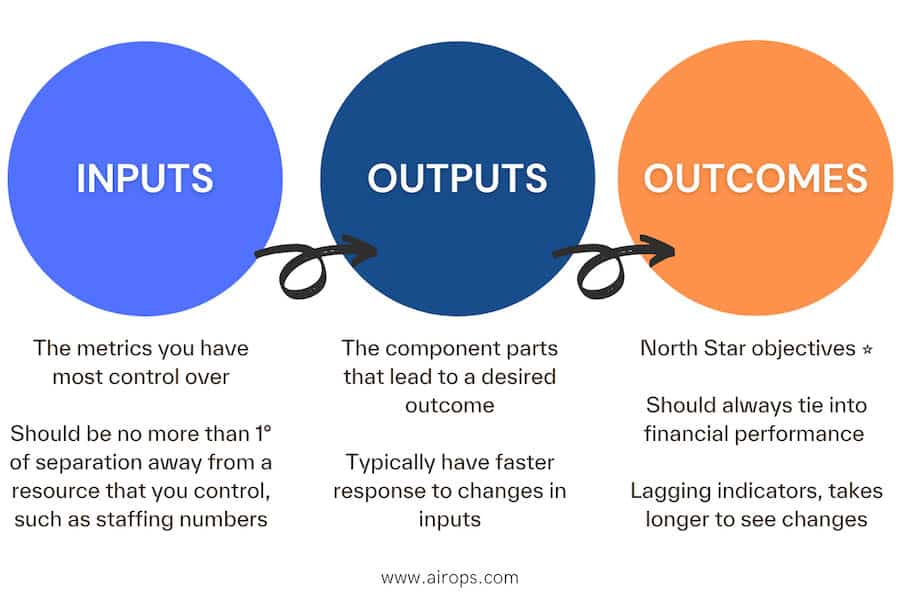
Sales managers play a pivotal role in this process, using advanced tools and technologies to monitor and analyze sales performance data. These insights enable them to coach their teams effectively, aligning sales efforts with organizational goals. Additionally, the integration of gamification elements, such as those offered by Spinify, transforms the tracking of sales metrics into an engaging and motivational experience. By fostering a competitive yet collaborative environment, sales teams are empowered to achieve remarkable results, consistently exceeding their sales targets and contributing to the overall success of the organization.
How High-Performing Sales Teams Leverage Metrics to Drive Growth
High-performing sales teams don’t leave success to chance. They rely on data to track sales performance, monitor sales efforts, and improve sales strategies. Sales metrics dashboards provide insights into key areas such as customer acquisition cost (CAC), customer satisfaction, and monthly recurring revenue (MRR). These metrics allow sales managers to measure sales performance effectively and make informed decisions that drive revenue growth.
Why Metrics Matter
Metrics are the language of success in sales organizations. From tracking average revenue generated to monitoring the sales cycle length, these numbers reflect a sales team’s performance. But tracking sales metrics isn’t just about measuring progress; it’s about finding ways to improve sales performance and close more deals.
The Most Important Sales Metrics to Track
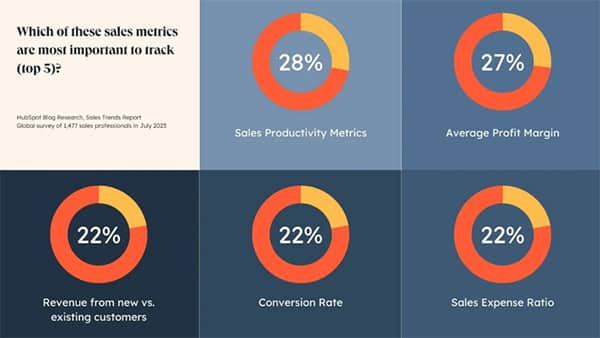
1. Revenue-Related Metrics
- Total Revenue: Calculate total revenue to measure the success of your sales efforts.
- Monthly Recurring Revenue (MRR): A critical metric for subscription-based models, MRR highlights growth trends.
- Average Revenue Generated per Customer: Gain insights into customer value and identify opportunities for upselling. Additionally, consider customer acquisition costs (CAC) to understand the average expenses related to acquiring a new customer and optimize your marketing and sales strategies accordingly.
2. Customer Metrics
- Customer Acquisition Cost (CAC): Understanding CAC helps sales managers optimize marketing and sales expenses.
- Customer Lifetime Value (CLV): Measuring CLV reveals how satisfied customers contribute to long-term profitability.
- Customer Retention Rate: Satisfied customers are more likely to stay, reducing churn and increasing lifetime value.
3. Sales Funnel Metrics
- Sales Pipeline Velocity: How quickly leads move through your sales pipeline can make or break your sales strategies.
- Average Sales Cycle Length: Shorter cycles often mean a more efficient sales process.
- Average Deal Size: Knowing this metric helps refine targeting and optimize sales efforts.
Other Key Sales Metrics to Track
In addition to revenue, customer, and sales funnel metrics, there are several other critical sales performance metrics that high-performing sales teams monitor to gain a holistic view of their success. These metrics provide deeper insights into the sales process and team performance, helping sales managers make data-driven decisions.
1. Sales Expense Ratio
The sales expense ratio measures the cost of sales relative to the revenue generated. It’s an essential metric for evaluating the efficiency of sales efforts and ensuring that sales activities are cost-effective.
Why It’s Important:
This metric helps sales organizations identify areas where spending can be optimized without compromising sales performance.
2. Net Promoter Score (NPS)
The Net Promoter Score gauges customer loyalty by asking how likely customers are to recommend your product or service.
Why It’s Important:
Satisfied customers are more likely to contribute to repeat business, higher customer retention rates, and increased referrals. A high NPS reflects strong customer satisfaction and enhances the reputation of the sales team.
3. Average Sales Cycle Length
Tracking the average sales cycle length provides insights into how efficiently deals are being closed.
Why It’s Important:
A shorter sales cycle typically indicates a streamlined sales process, allowing sales reps to close deals faster and improve overall performance.
4. Market Penetration Rate
Market penetration measures the percentage of potential customers in a target market who are purchasing your product or service.
Why It’s Important:
This metric shows how well your sales strategies are performing in capturing market share and can help refine approaches in specific regions or industries.
5. Leading and Lagging Indicators
- Leading Indicators: Metrics such as sales activity, number of new leads generated, and pipeline growth predict future sales performance.
- Lagging Indicators: Metrics like revenue generated, average deal size, and closed deals measure outcomes and reflect past performance.
Why They’re Important:
Balancing leading and lagging indicators gives sales managers a comprehensive view of both current efforts and their impact on long-term success.
6. Sales Pipeline Conversion Rates
Pipeline conversion rates measure the percentage of leads that move through each stage of the sales funnel.
Why It’s Important:
This metric identifies bottlenecks in the sales process and helps sales professionals focus on areas where prospects are dropping off.
7. Customer Satisfaction Score (CSAT)
Customer satisfaction is a leading indicator of future sales success. The CSAT score reflects how well your product or service meets customer expectations.
Why It’s Important:
High CSAT scores lead to increased customer retention, higher lifetime value, and more opportunities for cross-selling or upselling.
8. Sales Pipeline Value
The total value of opportunities in the pipeline provides a clear picture of potential revenue.
Why It’s Important:
This metric helps sales leaders assess whether the current pipeline is strong enough to meet sales targets.
Tracking these additional sales metrics ensures a more comprehensive understanding of your sales team’s performance. With tools like Spinify, sales organizations can easily track and visualize these metrics in real time, turning data into actionable insights that drive results.
Sales Activity and Efficiency
Sales activity and efficiency are crucial components of a sales team’s overall performance. By tracking and analyzing these metrics, sales managers can identify areas for improvement and optimize their team’s workflow. Understanding how efficiently your team operates can reveal bottlenecks in the sales process and highlight opportunities for training and development.
To further enhance sales activity, sales managers should focus on setting clear, achievable sales targets and regularly reviewing sales performance data. This approach not only helps in identifying high-performing sales reps but also in understanding the factors that contribute to their success. Additionally, fostering a culture of continuous feedback and open communication encourages sales professionals to share insights and strategies that have proven effective.
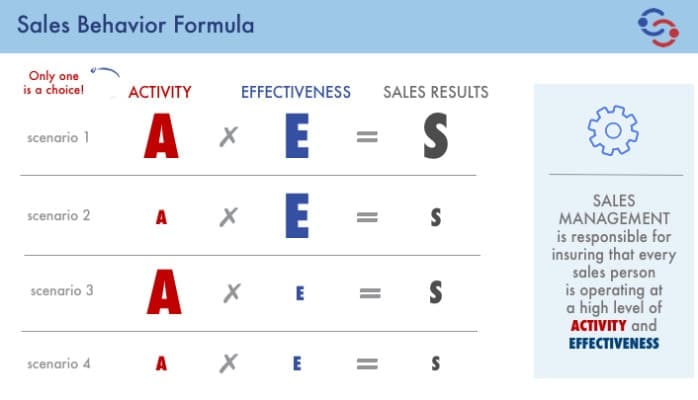
Efficiency in sales processes can be improved by leveraging technology and automation tools. These tools streamline repetitive tasks, allowing sales representatives to focus on building relationships and closing deals. Furthermore, regular training sessions and workshops can equip sales teams with the latest skills and techniques, ensuring they remain competitive in a rapidly evolving market.
By prioritizing sales activity and efficiency, sales organizations can drive significant improvements in overall sales performance, leading to increased revenue and sustained growth.
Leading and Lagging Indicators
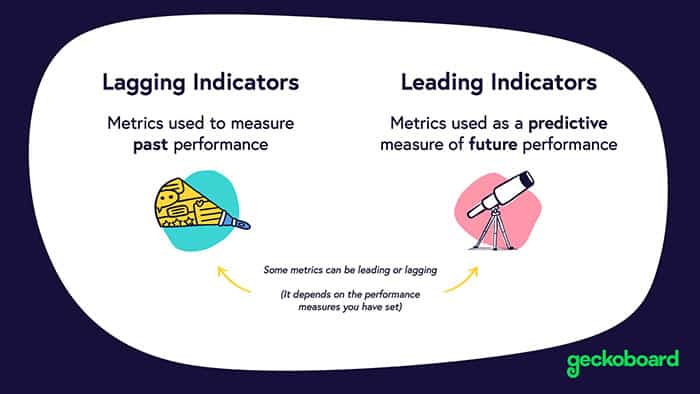
Understanding the Difference
High-performing sales teams balance leading indicators (predictive metrics like sales activity and pipeline growth) with lagging indicators (outcome-based metrics like revenue generated and closed deals). By doing so, they can not only predict future sales performance but also assess past sales efforts to identify what strategies are working and where improvements are needed.
Leading indicators, such as the number of new leads generated or the rate at which leads are moving through the sales pipeline, help sales managers anticipate future sales outcomes and adjust strategies proactively.
On the other hand, lagging indicators provide a clear picture of the results achieved, offering insights into the effectiveness of sales processes and the overall health of the sales team’s performance. By understanding and leveraging both types of indicators, high-performing sales teams can maintain a balanced approach, ensuring they are not only meeting current sales targets but also setting the stage for sustained growth and success in the future.
Key Leading Indicators to Monitor
- Number of new customers added to the sales pipeline.
- Market penetration rate for new sales territories.
- Customer satisfaction score (CSAT) or net promoter score (NPS) to gauge early signs of success.
Enhancing Sales Performance with Spinify
Gamification for Sales Teams
Spinify’s gamification tools transform sales performance dashboards into interactive, motivational experiences. By turning performance metrics into friendly competitions, Spinify helps sales professionals stay focused on achieving their goals. These tools not only foster a competitive spirit but also encourage collaboration and teamwork among sales reps. By integrating game-like elements such as points, badges, and leaderboards, Spinify creates an engaging environment that motivates sales teams to push their limits and exceed sales targets.

The platform also provides personalized feedback and insights, helping sales managers identify strengths and areas for improvement within their teams. This targeted feedback enables sales reps to refine their sales strategies and improve their performance over time. Furthermore, Spinify’s gamification approach enhances job satisfaction and employee morale, leading to higher retention rates and a more cohesive sales team. By making the tracking of sales performance metrics an enjoyable experience, Spinify empowers sales organizations to drive growth and achieve sustained success.
How Spinify Boosts Team Performance
- Motivation through Leaderboards: Sales representatives compete for top spots on customizable leaderboards.
- Real-Time Performance Insights: Track sales metrics in real-time to keep teams aligned with sales targets.
- Recognition for Achievements: Celebrate sales reps’ wins, whether it’s closing deals or improving customer satisfaction.
Integrating Sales Data Seamlessly
Spinify integrates with CRM platforms to automatically pull in sales performance data, such as average sales cycle length, customer lifetime value, and average deal size. This ensures sales managers have up-to-date insights to guide team strategies.
Breaking Down Sales Metrics Dashboards
What to Include
A high-performing sales team’s dashboard should focus on these core areas:
- Sales Revenue: Highlight the revenue generated by the team.
- Performance Metrics: Include metrics like the sales expense ratio and average value per deal.
- Customer Insights: Track customer satisfaction scores and net promoter scores to gauge loyalty.
How to Use Metrics to Improve Sales Strategies
Setting Sales Goals
Sales leaders can use metrics to set realistic, measurable sales goals that align with the company’s objectives. Whether aiming to enhance market penetration or reduce customer acquisition cost, clear goals guide the sales process.
Evaluating Sales Professionals
By tracking sales metrics, managers can identify top-performing sales reps and provide targeted coaching to those who need support. This data-driven approach boosts team performance and ensures consistent success.
How High-Performing Sales Teams Use Metrics and Gamification to Achieve Results
High-performing sales teams rely on key sales metrics to measure, track, and improve performance. By leveraging tools like Spinify, sales organizations can gain valuable insights, motivate their teams, and achieve measurable results. Whether it’s reducing customer acquisition cost, improving customer retention, or increasing average revenue generated, the right metrics make all the difference.
Sales metrics provide a roadmap for success, allowing sales managers to identify strengths and weaknesses within their teams. By focusing on metrics such as sales pipeline velocity, customer lifetime value, and net promoter score, high-performing sales teams can pinpoint areas for improvement and refine their sales strategies. These metrics also help in setting realistic sales targets, ensuring that the team remains aligned with the organization’s overall objectives.
Furthermore, tracking sales performance data regularly allows sales leaders to adapt quickly to market changes and customer needs. By analyzing trends and patterns in the data, sales organizations can make informed decisions that enhance sales efforts and drive growth. This proactive approach not only boosts team performance but also contributes to long-term profitability.
Incorporating gamification into the tracking process adds an element of fun and engagement, making it easier for sales reps to stay motivated and focused on their goals. Spinify’s platform transforms sales performance dashboards into interactive experiences, encouraging healthy competition and collaboration among team members. By celebrating achievements and recognizing top performers, sales teams can foster a positive and productive work environment.
Ultimately, by utilizing the right sales metrics and tools, high-performing sales teams can achieve remarkable results, consistently meeting and exceeding their sales goals.
Spinify: Revolutionizing Sales Performance Enhancement
In the fast-paced sales landscape, staying ahead demands more than conventional tracking techniques. Enter Spinify, an innovative solution crafted to boost sales performance through gamification and real-time data insights. Spinify redefines how sales teams interact with their metrics, transforming routine tracking into an engaging and motivating experience.
Why Opt for Spinify?
Spinify adopts a distinctive approach by incorporating game-like elements into sales performance dashboards. This not only makes tracking metrics more captivating but also motivates sales reps to excel. With features like leaderboards, achievements, and personalized feedback, Spinify cultivates a competitive yet cooperative atmosphere that drives success.
Core Features of Spinify
- Gamified Performance Tracking: Turn your sales metrics into interactive experiences that inspire and motivate your team.
- Real-Time Data Integration: Effortlessly pull in sales performance data from your CRM to keep your team aligned with sales targets.
- Customizable Leaderboards: Promote healthy competition with leaderboards that showcase top performers and celebrate accomplishments.
- Actionable Insights: Obtain valuable insights into team performance, enabling sales managers to make informed decisions and refine strategies.
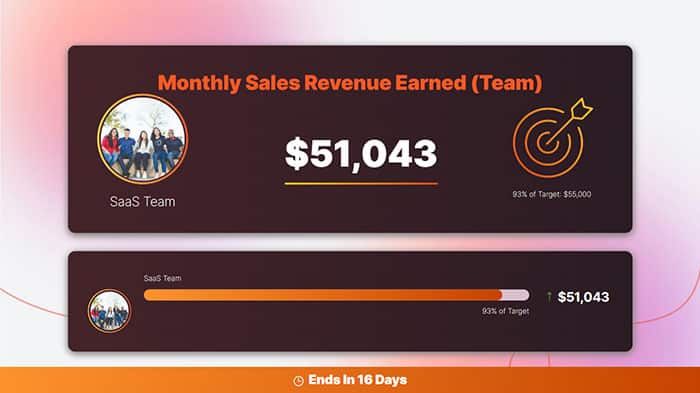
Advantages of Using Spinify
- Boosted Motivation: By transforming sales performance tracking into a game, Spinify keeps sales reps engaged and motivated to reach their objectives.
- Enhanced Collaboration: Foster teamwork and knowledge-sharing among sales professionals, leading to improved overall performance.
- Superior Sales Outcomes: With a focus on key sales metrics and real-time feedback, Spinify aids sales teams in consistently meeting and surpassing their goals.
By selecting Spinify, sales organizations can revolutionize their approach to sales performance, ensuring enduring success and growth. Embrace the future of sales tracking and make every sales effort count with Spinify.
Ready to boost your team’s performance? Start tracking the right sales metrics today with Spinify.
Put those insights into practice.
Set your team up for success by improving their performance through gamification.
Back to blog







